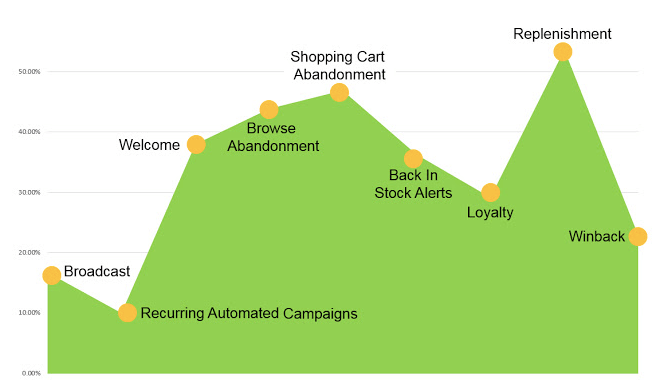
10 Ways to Improve Conversions with Limited Resources (Step-by-Step)
Use these 10 proven steps to increase conversions on your own with limited resources.
Smart marketers understand the sure path to improve ecommerce conversion rate is through ongoing testing and incremental changes. Conversion rate optimization is a process, not an event.
That said, many small and medium sized ecommerce businesses often have limited resources initially to invest in CRO. They need to earn some early wins on their own before taking the next step with adding a new team member or CRO firm.
The good news is there are a number of proven ways you can increase your conversions on your own with limited resources. In this article, we’ll cover 10 step-by-step tactics you can begin using today within these limits.
Ecommerce Tactics to Increase Conversion Rate
Begin by focusing on the golden rule of conversion rate optimization: eliminate friction and build momentum. You want an easy-to-navigate path to sales, and you want to provide plenty of reason for prospects to want to travel along that path.
Here are 10 proven steps to make that happen.
1. Work out the technical problems
The ad can do an excellent job of attracting qualified prospects and sending traffic to your landing page; but if that page can’t load in visitors’ browsers within a few seconds, chances are high they’ll never see the landing page.
Make sure your backend developer takes the time to:
- Add caching plugins to decrease page size
- Use CDN to ensure fast load time
- Optimize images for quick loading
The aim should be a page load time of three seconds or less. If this can’t happen, nothing good is going to transpire. Other technical features (opt-in boxes, for instance) should look good and perform flawlessly. Never forget about behind-the-scenes adjustments. They can make or break your efforts.
2. Find areas of frustration
You and your design team know all about your products, your offering, and your navigation. The sales path is obvious to you, but it may not be so evident to your prospects. Believe it or not, some ecommerce managers and/or SEM managers have never personally walked through their own check out procedure. They think they know what’s best for the customer, but they’ve never been a customer of the company they’re working for.
Do your best to look at your offer through the eyes of a prospect. Buy your own goods. Enlist real prospects to interact with your offer and provide feedback on areas of friction where they found buying from you to be difficult or confusing.
There are tools available that will allow you to observe user experience testing in action. Those can get expensive and complicated, though. For help selecting the right methods, contact The Good.
3. Make each page serve one purpose
Let’s get clear on terminology. The “landing page” is where the prospect ends up after clicking on the link in your advertisement or other marketing message—perhaps in your email campaign. If you’re going to succeed at boosting conversion rate overnight, ecommerce landing pages should adhere to these fundamentals:
- The landing page should never be the homepage of your website
- The landing page must continue the conversation or make good on the promise the ad introduced
- The landing page should have one specific job and one CTA
Be careful here. Many SEM companies focus only on ad design and messaging. They leave the landing page selection and preparation up to you. You might pay for an ad that’s sending rush-hour-levels of traffic your way. Though if the landing page isn’t right, you’ll be sorely disappointed in the ad spend ROI.
We’ve seen companies hop from one SEM manager to another, when the real problem isn’t ads that underperform – it’s landing pages that don’t follow the guidelines above.
4. Use a simple design, not an art gallery
Most designers love to draw. Give them a blank sheet of paper, and they’ll fill it up with intricate patterns. The graphics you use should do two things: draw the prospect’s attention and direct it to your call to action (CTA). The designer’s job is to make your CTAs pop, not to fill the page with pretty pictures. Use plenty of white space. Limit the artwork and the sales copy. Keep it simple.
5. Edit for clarity
Much of the time, friction comes from a lack of clarity. Leave industry jargon for engineers and technical staff. When you’re speaking with prospective customers, use the words they use to describe your products.
EXAMPLE: A Pacific Northwest logging supplier discovered that the steel cable, which the manufacturer referred to as “strawline,” was selling sluggishly to small companies in a certain region. As it turns out, small company owners refer to the product as “haywire,” creating a mismatch in terminology. Once the supplier changed the wording in the product bulletins to match the buyers’ expectations, sales picked up immediately.
Keep language clear and relative. Use simple statements. If you can describe the offer in a few concise sentences, do that and stop writing. Dense blocks of text with hard-to-understand terms can turn the sales temperature down to frigid.
6. Reduce risk to increase motivation
Buyers are skeptical – and for good reason. If an offer sounds too good to be true, it probably is; but you have something that provides real benefit. You’re running a special, limited-time promotion (let’s say), and you’re supporting it with a pay-per-click campaign.
You removed the obstacles from your path to sales, and your landing page or pages are in line with best practices. Your cake is ready, now you need some icing to make it even more tempting.
One way to do that is to reduce risk. You want the buyer to feel like there’s no way to go wrong by accepting your offer.
Here are examples of how to do that:
- Provide a guarantee
- Accept returns
- Include free shipping
- Use testimonials from satisfied customers
- Show trust indicators (security logos, etc.)
It’s important to not only put risk-reducing benefits in place, but also make the prospect aware of them. Don’t hide guarantees and return policies in fine print – bring them up and brag about them. Make them obvious.
7. Leverage your email contact list
Your email list is your own private gold mine. It’s your richest source of leads, and it’s where you’ll find your most loyal customers. Properly cultivated, it can give you a ready-made, instant way to increase conversion rate. Ecommerce without a robust list can be a difficult nut to crack.
Note the “properly cultivated” part. That means you do more than send “Buy Now” messages to your email list. You should be sending cart abandonment emails, reminder messages, win-back campaigns, and more. The graphic below depicts open rate effectiveness for different email marketing tactics:

8. Create urgency
Your offer can’t last forever. The price will go up. Stock will run out. These aren’t contrived issues, they’re true. The better job you do of reminding the prospect it’s important to act now, the more sales you’ll generate.
Countdown timers, “left in stock” indicators, and “while supplies last” messages can help get the point across. Tools and tactics like those are always important, but when your aim is to improve ecommerce conversion rate overnight, they’re essential.
9. Don’t skimp on product presentation
Your product or service is the star of the show. If the images you use aren’t high-quality and consistent with the message, don’t use them. Show your shoes on a foot, your paint on a wall, your jacket being worn.
Videos are an excellent way to display your product in its natural habitat. Even better, get existing clients to generate the videos (user generated content). Your copy and images must work together towards the same goals – generating desire, proving value, and moving prospects further towards the sale.
10. Use better bait
Special discount coupons, giveaways, and contests can help draw attention to your offer. Be super careful, though, to make sure you’re bringing in qualified prospects—not just click-throughs. Make sure the prize or free item is something your target audience would love to have, but isn’t all that exciting to others. Otherwise, you’ll end up with a whole lot of clicks, but few sales. That’s the opposite of the outcome you’re seeking.
'There are many things involved in a successful ecommerce business, but I’ve yet to see a company fail that’s putting resources into CRO' @ryangarrow Click To TweetHow to Improve Ecommerce Conversion Rate
Once you’ve tasted what can happen when you pull together tips like these to get boosts in sales, you may wonder how to realize the benefits of conversion rate optimization on a more regular basis.
This is a starting point. To go deeper, you’ll need to look at broader data-driven design techniques, expand user experience testing, and more. An excellent next step is to use our Stuck Score™ assessment tool to benchmark key conversion areas of your ecommerce website. It’s a complimentary service by The Good. If you want to discuss your goals, just give us a call.
The next time you need a quick boost in sales, try these tips. Then let us know how it went. We may feature your company in a case study or article.
Let’s do it!
Resources:
- How to Multiply Your PPC ROI
- 7 Key Benefits of CRO to an Effective SEM Budget
- [Interview] How the Combination of SEM and CRO Leads to Big Growth

About the Author
Jon MacDonald
Jon MacDonald is founder and President of The Good, a conversion rate optimization firm that has achieved results for some of the largest online brands including Adobe, Nike, Xerox, Verizon, Intel and more. Jon regularly contributes content on conversion optimization to publications like Entrepreneur and Inc. He knows how to get visitors to take action.